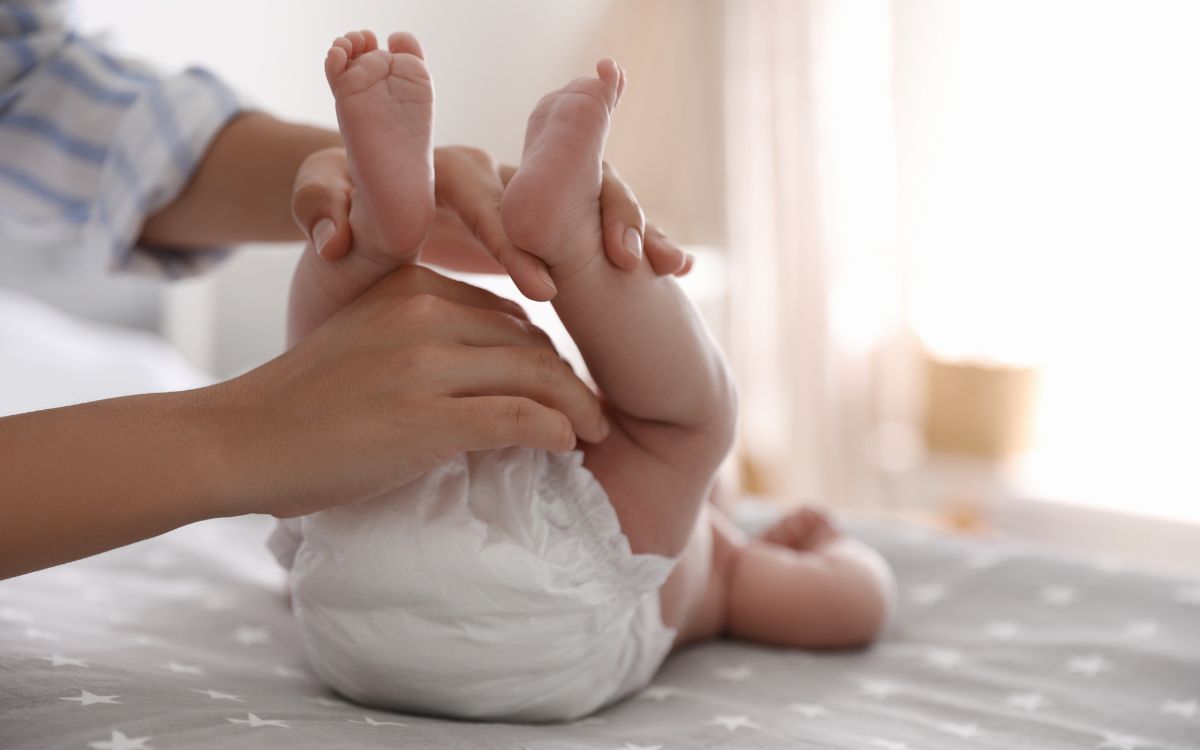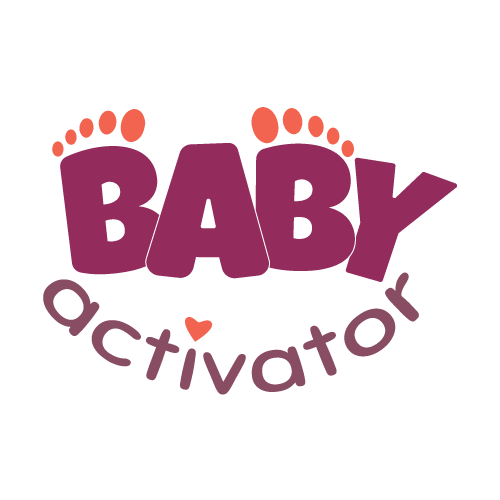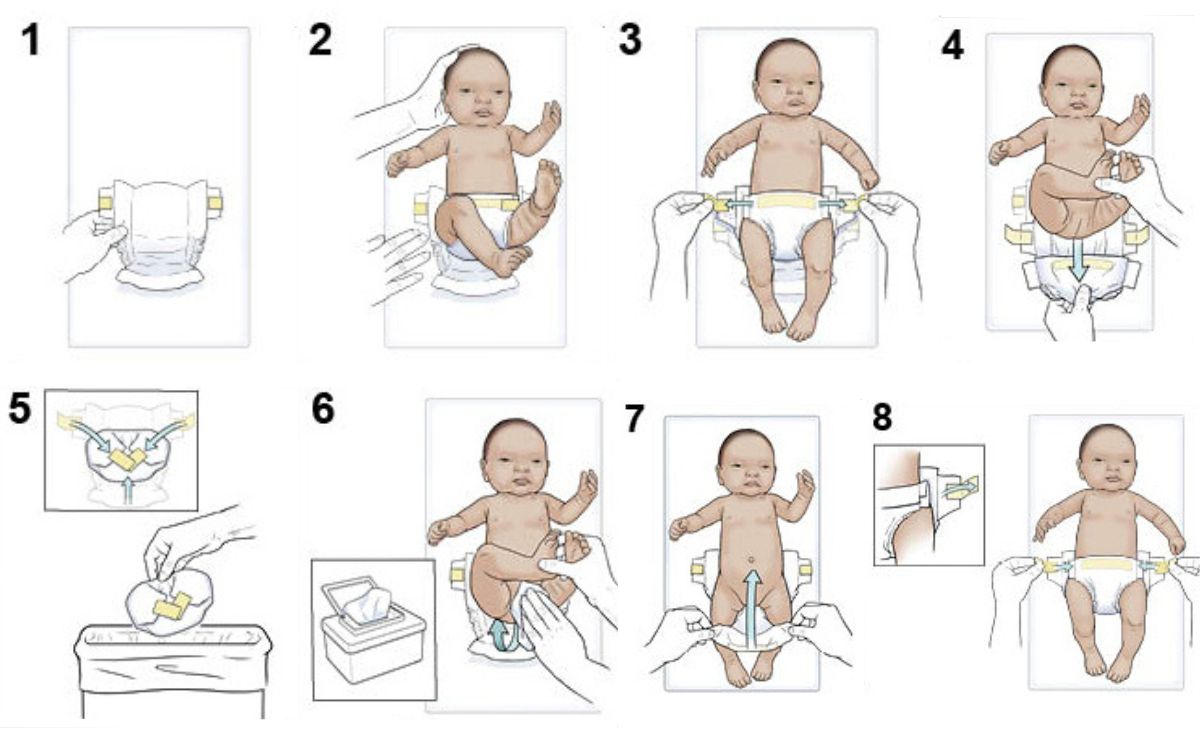Diapering your child is as much a part of parenting as feeding. However, changing a diaper takes some practice. It will quickly become second nature once you get the hang of it. Baby diapers are essential products for parents. Baby diaper provides various benefits. Changing a nappy can help the baby sleep without being disturbed.
Frequent diaper changes may not be your favorite part of a baby. It is a necessary part of the baby care package. It's also essential for babies for various reasons. Changing a wet or messy diaper helps prevent irritation and rash. Here's everything new parents need to know about diaper changing. Including how to make the easy process as simple as possible. Continue reading for a step-by-step guide on how to change your baby's diaper.
What You Need To Change A Baby Diaper?
What is the first step in diaper changing? "Prepare the space!" "You will want a safe, wipeable surface, a clean diaper, and wipes or ointments within reach."
Make sure you have a diaper-changing area. That is fully stocked with everything. You'll need to change your baby diaper. The following are the diapering necessities:
- Diapers
- Diaper cream
- Baby wipes
- A container of warm water and soft clothes or cotton balls. The AAP recommends using alcohol- and fragrance-free wipes.
- A Diaper pail for dirty diapers
- A changing pad or clean towel to place under your baby
- A spare set of clothes for your child (just in case!)
Steps For Changing A Diaper For A Baby

Here's an essential step guide to changing a baby's diaper.
Step-1:
Start with washing your hands with soap and warm water.
Step-2:
Place the baby on a clean, dry, and secure surface. Consider placing a baby blanket or disposable pad on your changing surface. It helps to make it more comfortable and reduce cleanup. Ensure you have everything you need within arm's reach. "If your baby is in a high place, keep one hand on the baby at all times to prevent falls.” When little babies are moved on higher floors without proper supervision, they can fall down easily, leading to severe head and neck injuries."
Step-3:
Take out and discard the dirty diaper. Keep the baby's ankles firmly in the air. If there's a poop, use the dirty diaper to wipe away any excess. "You want to keep a grip on the ankles because when there's poop. Dispose of the diaper quickly, ensuring your preferred receptacle is nearby and open.
Step-4:
Clean the baby with wipes. When wiping poop, pee, or debris, make sure to wipe from front to back. "Don't forget all the little creases and crevices. You'll want to lay the baby's legs down. Because poop and pee can get stuck in the thigh folds,"
Step-5:
Put on a fresh diaper. Open the baby's legs and pull the front part of the diaper up and between their legs. Then, bring the tabs to the front of the belly and fasten. "Make certain that the diaper is snug against your baby's skin. But not too tight or too loose." "You should be able to run two fingers between your child's stomach and the inside lining of the diaper if the fit is good.
Step-6:
Dress Baby after you've changed your baby's diaper, change his clothes and sheets as needed, or re-dress him.
Step-7:
Place your baby in a safe and secure area. If you've been using an elevated changing surface, it's time to put the baby back in their carrier, crib, or designated safe play area.
Step-8:
Clean up your hand. Remember to clean the changing surface and wash your hands once more. If your baby's hands have gotten into their diaper area, you should also clean them. (Little hands will stray!).
How To Change A Girl’s Diaper
Wash a baby girl's diaper from front to back to avoid urinary tract infections. Make sure to wipe between the skin folds as well.
How To Change A Boy’s Diaper
Baby boys are notorious for peeing as soon as their diaper is removed. So, keep a tissue or towel nearby to cover their penis while changing them. Another useful hint? When putting on a new diaper, make sure to point the penis down. It prevents pee from leaking out the top of the diaper.
How To Changing Your Toddler's Diaper
As your child ages, you may find it increasingly. Difficult to keep them still for diaper changes. After all, your toddler has so much to do and discover. And baby diaper changes can disrupt all of the fun and activity. You may try changing your wiggly toddler's diaper with diapers with stretchy sides. You pull these diapers up like you would pants. To remove them, tear the sides for easy removal.
You may want to clarify what you're doing as you change your toddler's diaper. So they can become familiar with what's going on as an early step toward potty training. You may also dump the poop from the diaper into the toilet or potty. In contrast, they are watching so they can begin to make the connection that is where poop should go.
Baby Diaper Change FAQ
How Often Should You Change Your Diaper?
Experts advise changing your baby diaper after every poop. And frequently in between to prevent a wet diaper from remaining on for too long.
Depending on your baby's age. Whether breastfed, bottle-fed, or eating solids, and any other factors, such as digestive issues. He or she may have a bowel movement after every meal. Once a day, or even once a week. All of this is normal. When peeing, your child may pee every one to three hours or only six times daily.
How To Change A Poopy Diaper?
Wipe all the poop into the diaper with the top part of the diaper, then slide it away or fold it in half under your baby. Clean your baby carefully with wipes. Next, slip a clean diaper under their bottom and fasten the clean diaper.
How Do I Prevent Diaper Rash?
Changing a baby diaper is the best way to avoid diaper rash. Change the baby's diaper as soon as it becomes soiled. A barrier cream is applied at bedtime. It can also protect a baby's skin for more extended overnight periods. Rash and irritation can caused by using too many baby wipes. Most modern diapers are so absorbent. They prevent a great deal of urine from touching a baby's skin.

